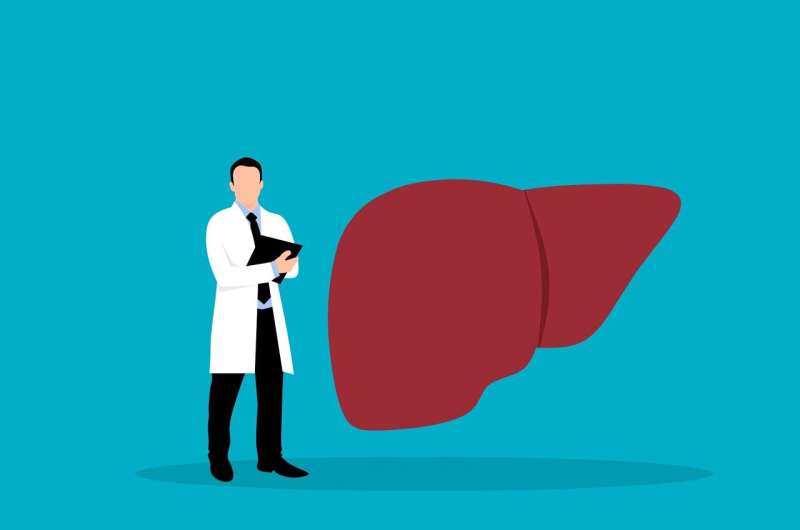
Credit: Pixabay/CC0 Public domain
The current method of assessing drug-related liver injury does not provide an accurate picture of the toxicity of certain drugs – or lack thereof – to the liver, according to a new study led by researchers at the Perelman School of Medicine at University of Pennsylvania.
The classification of a drug’s potential to damage the liver, called “hepatotoxicity”, has historically been determined by counting individual reported cases of acute liver injury (ALI). Instead, researchers used real health care data to measure ALI rates within a population and found that the danger levels of some liver medications were misclassified. Their article was published in JAMA Internal Medicine.
“From a clinical perspective, knowing the rate of severe ALI after starting treatment with real-world data will help determine which patients need to be monitored more closely with liver-related laboratory tests during treatment,” said lead author Vincent Lo Re, MD, MSCE, associate professor of medicine and epidemiology.
“Incidence rates for severe ALI can be a valuable tool in determining the toxicity of a drug to the liver and determining when patients should be monitored, because incidence rates provide a truer and more real-world view of this toxicity Case reports do not accurately reflect observed rates of ALI because they do not take into account the number of people exposed to a drug and cases of drug-induced liver injury are often underestimated.
In the study, 17 different drugs had rates of more than five serious ALI events per 10,000 “person-years,” a measure that reflects both the number of people in a group and the length of time for which the study observes them (12 person-years could mean one person with data spanning 12 years or two people spanning six years).
The team determined that 11 of these drugs fell into lower categories of hepatoxicity based on case counts that likely did not reflect their true risk, since their incidence rates revealed higher levels of toxicity. One of the drugs falling into this group was metronidazole, an antimicrobial that can be used to treat infections of the reproductive or gastrointestinal system, as well as certain dermatological conditions.
Incidence rates, the number of new cases of a disease in a given period divided by the number of people at risk of contracting the disease, are a key measure for examining the health of a population because they give a more complete picture than a simple count. For example, a drug for which 60 cases of liver damage have been reported would be considered the most hepatotoxic by the traditional method, using the raw number of reported cases of liver damage.
However, if this drug had 60 observed serious ALI events and was used by five million people, the incidence rate would be very low and would likely indicate that the drug is not harmful to the liver. However, if 60 serious ALI events were observed in a population of 1,000 patients, this would reflect a higher, potentially more significant, injury rate.
To determine incidence rates, Lo Re and his team, including lead author Jessie Torgersen, MD, MHS, MSCE, assistant professor of medicine, examined electronic medical record data from nearly 8 million people provided by the United States Veterans Health Administration which had been compiled from 2000 to 2021.
Each person did not have pre-existing liver or biliary disease (a condition affecting the bile ducts or gallbladder) when they started taking any of the 194 drugs studied.
Each of these drugs was analyzed due to suspicions that they might harm the liver, as each had more than four published reports of liver toxicity associated with its use.
On the other side of the hepatotoxicity coin, researchers found eight drugs that were classified as the most hepatotoxic based on the number of published case reports, but which should actually be in the least toxic group for the liver, with lower incidence rates than a serious drug. ALI event per 10,000 person-years. For example, severe ALI rates for statins, often used to treat high cholesterol, were in the group that had less than one event per 10,000 person-years.
“The systematic approach we developed successfully measures rates of liver toxicity after initiation of treatment,” said Lo Re. “It was not surprising that the number of case reports did not reflect accurately observed rates of serious acute liver injury, given the limitations inherent in case reporting.”
With these results, researchers hope that there may soon be established mechanisms in electronic health records to alert clinicians to closely monitor liver-related laboratory tests in patients who begin treatment with a high rate elevated severe ALI.
“Importantly, our approach provides a method for regulatory agencies and the pharmaceutical industry to systematically investigate reports of drug-induced ALI in large populations,” Lo Re said.
More information:
Rates of severe acute liver injury after initiation of hepatotoxic therapy in real-world data, JAMA Internal Medicine (2024).
Provided by the Perelman School of Medicine at the University of Pennsylvania
Quote: New approach accurately identifies the most toxic medications for the liver (June 24, 2024) retrieved June 25, 2024 from https://medicalxpress.com/news/2024-06-approach-accurately-medications-toxic-liver. html
This document is subject to copyright. Except for fair use for private study or research purposes, no part may be reproduced without written permission. The content is provided for information only.